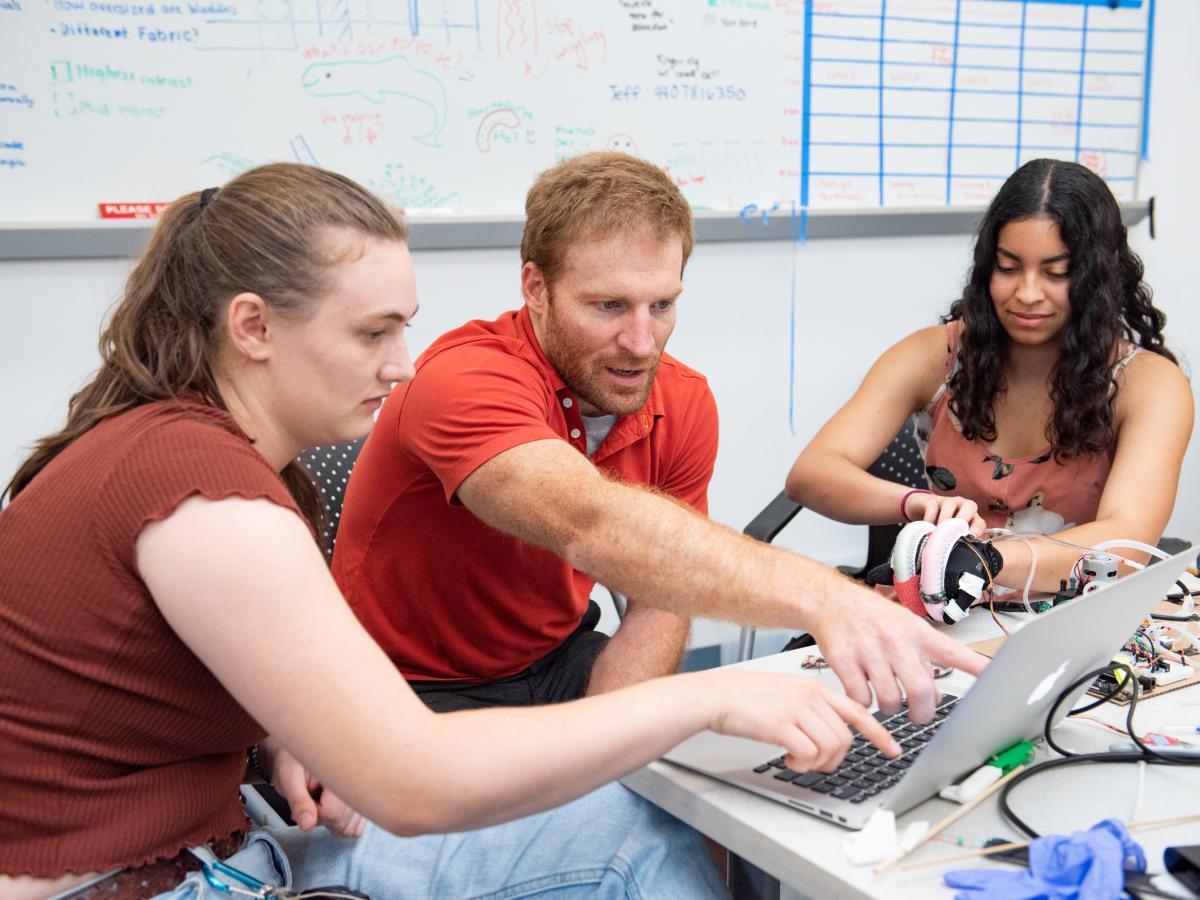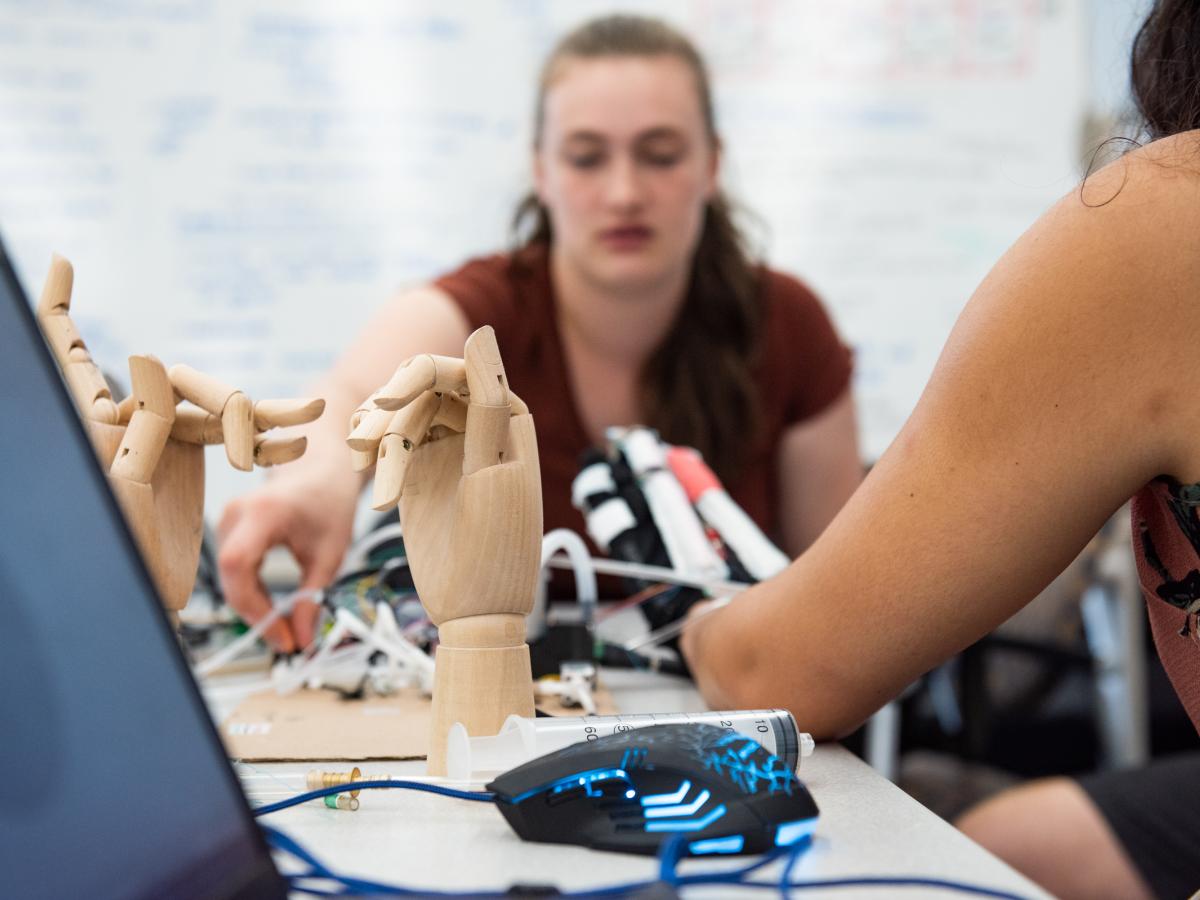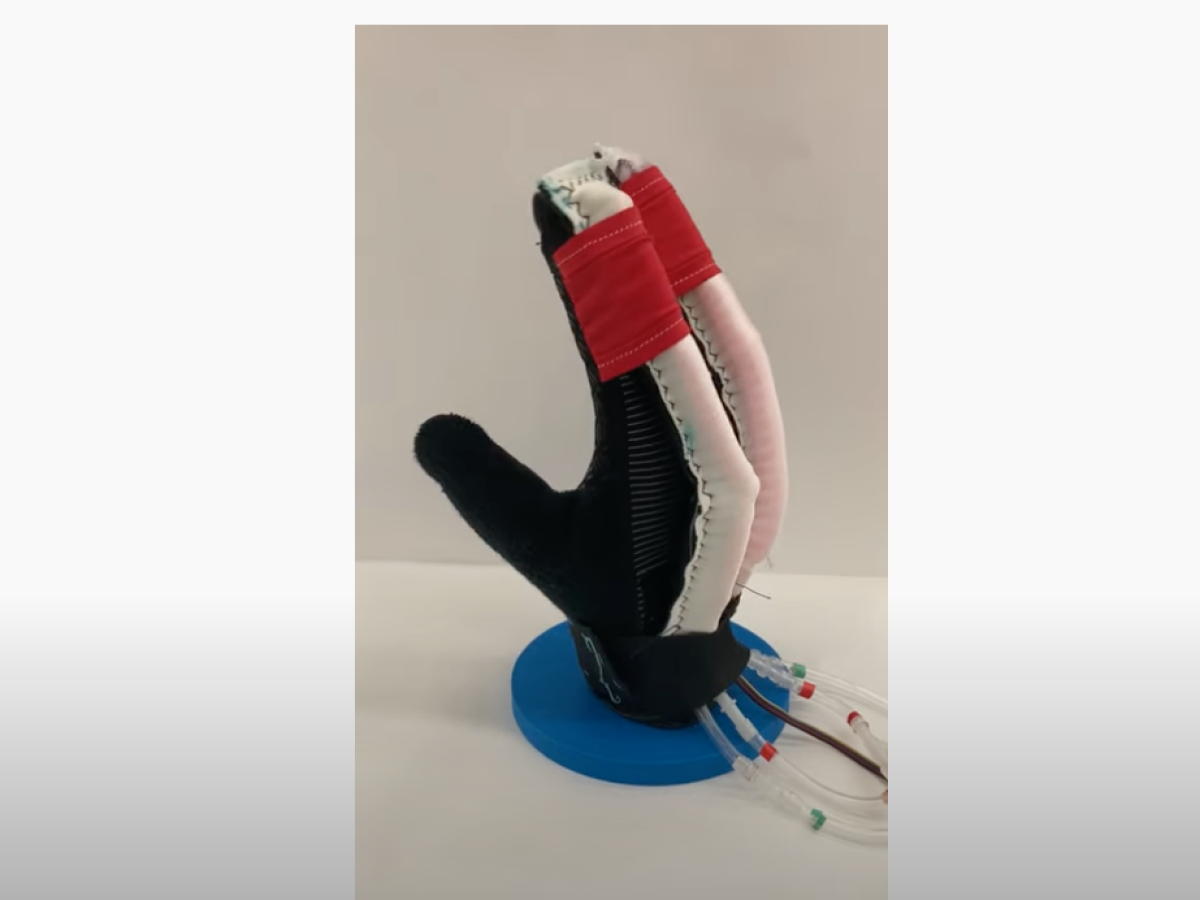August 13, 2021
This summer, a research team in Olin College's Laboratory for Adaptation, Inclusion, and Robotics (LAIR) continued work on a project to develop a low-cost physical therapy device using soft robotics.
The project, sponsored by The Peabody Foundation, began two summers ago when Jeff Dusek, Assistant Professor of Mechanical Engineering, began working with a local Needham family that was looking for a way to make their daughter’s Cerebral Palsy rehab exercises more accessible in their home.
A physical therapy plan for a movement disorder like Cerebral Palsy often involves specialized equipment that is not generally available for home use. Knowing that consistency and repetition are often key aspects of a PT program, Dusek wanted to help the family supplement the clinical setting at home in an accessible and affordable way.
Hand mobility became a focus for Olin team, and this summer, Oliners Chris Bocamazo ’24, Jadelin Kirkvold ’24, Dianna Sims ’23 and Nicola van Moon ’24, continued the work begun in 2019 on developing a glove with soft robotic actuators that can move a hand through range of motion rehab exercises.

Olin Professor Jeff Dusek (Center) works on creating a low cost physical therapy device with Nicola van Moon ’24 (Left) and Dianna Sims '23 (Right)
“The most rewarding part was getting to see the progress as we were making it,” said Nicola. “When we were going into the lab day after day as a team, we could go into so much greater depth than on projects during the school year. I really enjoyed thinking through how to design an experiment that can reliably measure the forces of a soft actuator. I am looking forward to continuing this testing and using the results to inform our glove design in the fall.”
Last summer during the height of the pandemic, a three-student team broke the project down into components— actuators, sensors, electropneumatic circuit—and worked remotely on the glove, said Dusek. While they worked from home, he would ship equipment to the students so they could continue to progress on the pieces.
“At home research in the pandemic was really hard but it created a way for us to focus on each area,” said Dusek. “We were able to make the best of the situation we had.”
The at-home nature of this research was a natural complement to the at-home maker movement that gathered momentum in 2020 as people from all over the world dove into creating PPE at home and committed to sharing open-source health safety technology. With so many individuals interested in at-home fabrication, said Dusek, it bolstered the Olin team in a time of isolation, knowing that individual makers and fabricators could make such a big impact. “It also helped us focus in on how we can look at existing research and adapt and simplify components fabrication,” he explained.

Student researchers work on developing a glove with soft robotic actuators during the project session.
“After a year of being remote, I was really excited to get to return to campus and work with a team in person,” said Nicola. “The focus of the project this summer was to do integration and testing after last summer's independent remote work. I was excited to work on figuring out how all of the systems worked together.”
The team concluded the summer with a completed prototype of a glove with integrated sensors and actuators that can move fingers through a prescribed range of motion.
In the future, Dusek hopes to partner with clinicians and design experiments to “think about how we’d test on individuals and determine whether this device has a rehabilitative benefit for a child with cerebral palsy.”
“Getting prototypes into the hands of users involves bigger ethical questions than if you’re just writing a paper,” says Dusek. “When do we say that an assistive technology is ready to be put out into the world?” There are myriad safety and ethics questions associated with a project like this. He hopes to continue to explore and develop more structures, types of testing, and collaborators that can help answer these questions.
